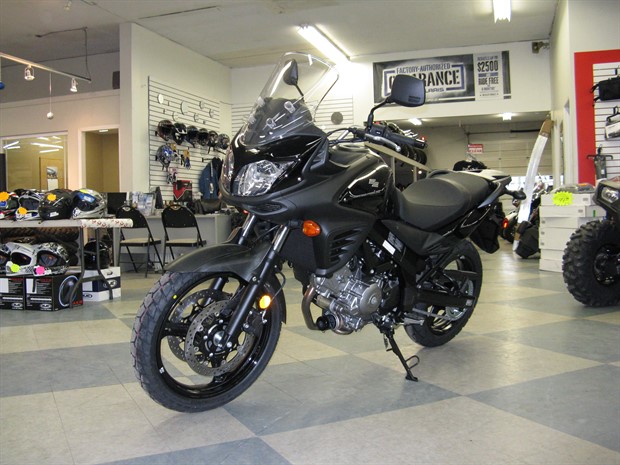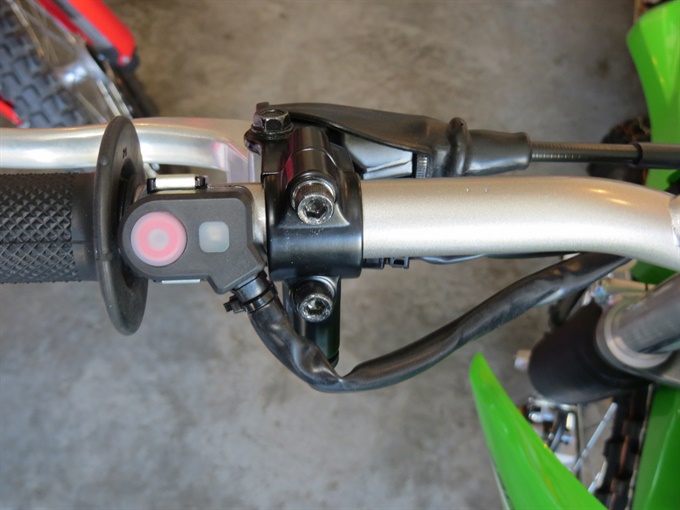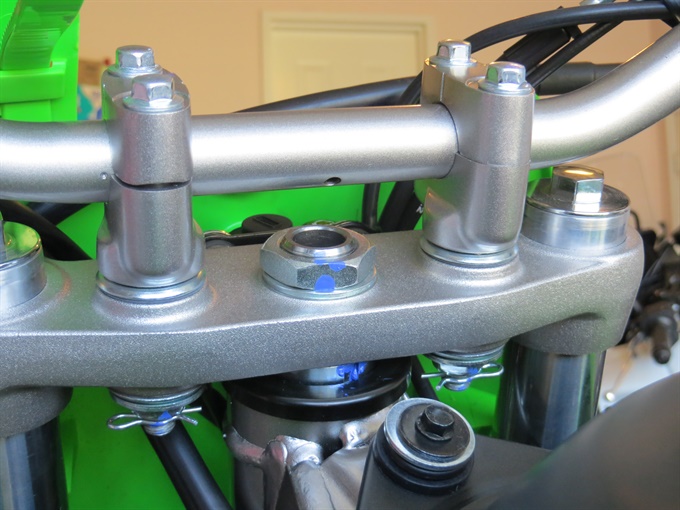Buying a New Motorcycle
Next: Buying a Used Motorcycle

Ok, so you’re thinking about buying a new bike. How exciting! It’s nice to have a new bike. As the first owner you don’t have to be concerned that the bike was abused, neglected, improperly serviced or modified, or in need of replacement parts due to damage, wear or removal, and a new bike means a full warranty (except perhaps competition bikes) – all things that can ease your mind. The major disadvantage to buying a new motorcycle is the (usually) higher cost, both upfront and the initial depreciation. If the bike is a new model, then there is a small risk of some "teething" problems (recalls, warranty issues, design deficiencies). Let’s cover a few items related to purchasing a new motorcycle. Let’s assume that you’ve already decided on which model you want.
What are dealer fees?
Dealer fees are the extra charges applied to a new motorcycle above the price of the bike itself. They include PDI (pre delivery inspection which usually includes assembly), freight (for shipping the bike from the distributor warehouse to the dealer), and often a documentation or administration fee (an extra fee some dealers charge for doing the paper work when you buy a bike, or simply to increase their profit margin). Some dealers may charge a separate fee (in addition to PDI) for assembling the bike. I’ve also seen a so-called delivery fee being charged, whatever that is.
So how much do these fees all add up to? It can vary greatly from bike to bike and from dealer to dealer. Some dealers even try to charge fees on used bikes, which is just an attempt to make the sticker price seem better than it actually is. Years ago, I was quoted $1200 in fees for a new Kawasaki KLR650. Based on my source, the dealer cost at the time was in the neighborhood of around $300 (in Canada), so this particular dealer was marking up the bike by an additional $900 or so. In 2012, I saw the dealer fees on a new CBR250R vary from $400 to $775, and these two dealers were located only about 80 km apart. Here's another example (Feb 2022) of dealer fees disparity: two BC Honda dealers in the same region with one charging $700 in fees for a 2022 CRF250F and the other charging almost $1600 in fees (the list price for the bike was the same). Here's one more example (Feb 2024), a new 2023 Honda CRF110F that lists for $3928 on the Honda Canada website and includes $529 for fees (PDI, Freight and other fees): at one dealer the price with all fees is $3799, and at another dealer in the same region the price is $3922 plus an additional $578 in fees. These prices do not include taxes. Factoring in the taxes gives us $4255 vs $ 5040, which is a huge difference, especially on a small bike.
I don’t begrudge dealers wanting or trying to make a little extra on a new bike sale by increasing their fees a bit as long as it’s reasonable. The profit margin on some bikes isn’t very high. Again, I suggest that you take a look at the fees on the Honda website for the bike, or one similar to, the bike you're interested in. In Aug 2023 I was quoted by a BC dealer MSRP + $1200 in fees for a 2023 KLX230RS; I responded by saying "are you serious?". That's just not reasonable. These days it seems the majority of dealers (at least the ones that I've checked in BC) are charging sky-high fees (like $1588! on a 2024 XT250). My advice is to refuse to pay those high fees and only agree to more reasonable charges. I believe many other people are of the same opinion because some dealers are sitting on a lot of inventory these days, including 2022 and 2023 models.
Should you travel to get a better deal?
I like to think that if you buy a bike at your local dealer, you will get better service down the road if you have problems. Well, I have lived in a number of different cities, and I’ve bought bikes from the local dealers and from dealers further away. I’ve had some good experiences with some local dealers in the different cities that I’ve lived in, but I’ve also had some bad experiences too. I would like to give my local dealers the business. However, if I find a good deal elsewhere, I may ask one of the local dealers if they can match the price. If they can, or at least come close, then I’ll buy locally. If they can’t (or won't) come near the price, or they can’t supply the product, then I’ll buy from the other dealer. If I can save $1000 by buying from a dealer 400 km away then, to me, it’s worth making the trip. Sometimes a dealer only 150 km away may offer a much better deal than the local dealer. Of course, you may have to travel simply because there isn't a local dealer.
Inspect your new motorcycle
You would think that your new motorcycle would be assembled correctly and be adequately inspected by the dealer. I mean, you could be paying several hundred dollars in fees for this. Sadly, your bike may not have been properly assembled and inspected (PDI'd) by the "tech". I know this from first hand experience. The issues on new bikes I have purchased have included: loose bolts, over tightened and damaged bolts, improperly adjusted drive chains, grossly under inflated tires, incorrectly routed cables and brake lines, improperly positioned and adjusted controls, idle speed set about twice as fast as it should have been, loose fenders, hand guards, loose wires and electrical connectors, disconnected vent and drain tubes, incorrect fasteners and minor showroom or transport damage.
On a new KLX230R S that we recently purchased, I identified about a dozen issues including a non-effective rear brake, compromised front brake line, incorrectly installed handlebar (bracket installed backwards), incorrectly installed clutch lever assembly (bracket upside-down and incorrectly positioned on bar), under-inflated tires, incorrectly installed seat, etc.! My advice is to inspect your bike thoroughly before you leave the dealer with it if you can, but certainly before you ride it. We picked up the bike after work shortly before the dealer closed for the day, which was a mistake as we didn't have adequate time to thoroughly inspect the bike there. I did notice a couple of things at the dealer, but in isolation, I didn't consider it a big deal. My main focus was inspecting for damage (I didn't find any). After I got home and did a more thorough inspection, I found several other problems, some of them so serious that they rendered the bike unsafe to operate. When you're rushed, you're more likely to miss things. I was quite angry that the bike had so many issues and complained to the dealer in an email that night. The dealer offered to refund our money in full, which I accepted as I didn't trust that there weren't more issues, perhaps some not readily apparent.


If you don’t have the knowledge to identify potential problems with a new motorcycle, have someone with who is to help you inspect it. Or, at least have someone from the dealership go over the bike with you. If something doesn't look right to you, ask about it. A lot of things should be obvious. Read your owner’s manual (they're often available online, so you can read through them in advance). Check the controls, oil level, tire pressures, chain tension, lights and damage. Visually check everything. The service technician should have test ridden the bike, but still ensure that the brakes are fully functional before you ride the bike (test at at a standstill and then at low speed). If, after getting your bike home you discover some problems with it, notify the dealer immediately and then take the bike back and have them correct the problem(s) at their expense.
New Bike – First Service
For most new motorcycles, the manufacturer states in the owner’s manual that the bike should be inspected and serviced after a specified period of time or distance ridden (commonly 1000 km / 600 mi for street bikes, 5-10 hours for dirt bikes). Depending on the bike, the list of items may include: oil and filter change, checking the idle speed, checking and possibly adjusting the engine valve clearances, tightening up the chassis and exhaust mounting bolts, checking the brakes and wheels, perhaps servicing the air filter (if the bike is used in dusty conditions), checking the steering, etc. This service should not be skipped because checking and or servicing these items in a timely fashion helps ensure that your motorcycle performs the way it should, is as safe as it can be, limits damage or failure of certain components, and in some cases eliminates voiding your warranty.
If you have the mechanical skills, knowledge and proper tools you may be able to perform most is not all of these checks and service items yourself. Be sure to read your warranty manual carefully, though, because you do not want to void your warranty. If you’re unsure about what you’re allowed to do yourself, you can contact the distributor’s customer service department. Often the owner’s manual will state what items should be serviced by an authorized dealer and what items can be performed by the owner. Things like changing the oil and servicing the chain are not difficult. Use a torque wrench to tighten up bolts correctly. For example, if the oil drain plug is not tightened enough it may loosen up and fall out, and the oil spilling out may cause you to crash, or cause serious damage to the engine. If you tighten the drain plug too much, however, you risk damaging the crankcase, and that can get expensive or at least be a big hassle getting the damage repaired. It’s often a good idea to buy the service manual for your bike because owner’s manuals often don’t provide adequate information on servicing your motorcycle. For example, the KLX140 owner's manual is quite comprehensive, but the CRF300L owner's manual doesn't even show how to change the oil or adjust the chain. If you don’t already own some quality tools (sockets, wrenches, etc.) including a torque wrench, buy some; common mechanics tools are not that expensive, especially if bought as a set; more specialized and professional tools can be expensive, though.
Next: Buying a Used MotorcycleBack: Buying a Motorcycle - New or Used?